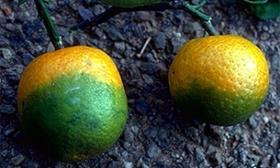
As Florida’s citrus growers attempt to save their groves in the wake of the deadly greening disease (HLB), a University of Florida Institute of Food and Agricultural Sciences (UFIFAS) researcher has put forward a new technique that could help growers answer a vexing question; why is so much fruit is dropping to the ground prematurely?
While there is no known cure for greening, research being led by UFIFAS professor of agricultural and biological engineering, Wonsuk “Daniel” Lee, suggests it is important to know where the disease has been located and how much damage it has caused at those sites.
Lee said one indicator of the severity of damage is the number of dropped fruit. The other is how much the fruit has decayed once on the ground.
“Daniel and his team are developing methods that will allow a grower to scan many acres to quickly and accurately estimate the severity of citrus fruit drop at any given time,” said Fritz Roka, UFIFAS associate professor of food and resource economics and a co-author in the study led by Lee.
In the newly published study, Lee and a team of researchers devised an algorithm that helps cameras detect decayed citrus. Lee and his colleagues used their camera equipment to take images of citrus at a commercial grove in Immokalee, Florida. The proposed algorithm improved accuracy of decay compared to previous studies, Lee said.



